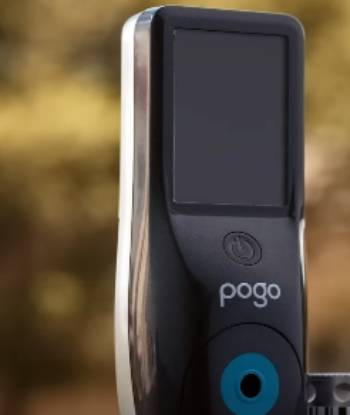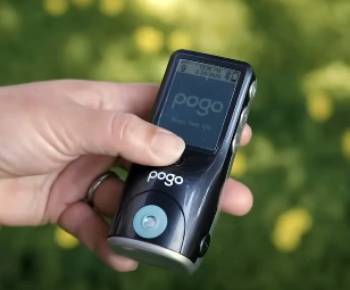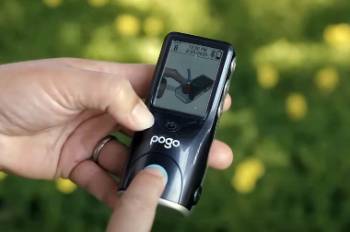If you’re tired of juggling test strips, lancets, and multiple steps just to check your blood sugar, the Pogo Automatic Blood Glucose Meter might be the solution you’ve been waiting for.
It simplifies the process into one seamless motion—just press and go. That’s it. No extra steps, no fumbling with tiny supplies, and no mess. With Bluetooth connectivity, automatic lancing, and discreet disposal, this device aims to make glucose monitoring as effortless as possible. If convenience and ease of use are your top priorities, this meter could be the best investment for your health.
My Experience with the Pogo Glucose Meter

After years of dealing with traditional glucose meters, I was more than ready for something simpler. I hated the hassle of carrying around separate lancets and strips, especially when I was on the go. That’s why the Pogo glucose meter caught my attention—it’s an all-in-one system designed to make testing quicker and easier.
From the moment I started using it, I could tell this was different. Instead of setting up multiple components for each test, I just pressed my finger against the meter, waited for a quick automatic prick, and got my reading almost instantly. There’s something liberating about not having to dig through supplies or dispose of used test strips separately.
But as much as I love the convenience, the Pogo meter isn’t perfect. I noticed that sometimes it struggled to read my blood sample, even when I was sure there was enough. I had to adjust my technique by pressing just right—not too hard, not too light. And while the meter itself is a great idea, the cost of replacement cartridges can add up quickly. That’s something to keep in mind if you test frequently.
Overall, though? It’s one of the most convenient glucose meters I’ve ever used, and that alone makes it worth considering.
How to Get the Most Out of Your Pogo Meter?

To make sure you’re getting the most accurate readings and maximizing the lifespan of your device, there are a few best practices to follow.
- Proper Finger Placement: If the meter isn’t registering your blood sample properly, try pressing your finger firmly but not forcefully against the sensor. Too much pressure can make it harder for the device to draw blood, while too little might not create enough contact.
- Keep Your Hands Warm: Cold hands can make it harder for the device to collect enough blood. If you’re having trouble, try rubbing your hands together or washing them with warm water before testing.
- Store Cartridges Properly: Pogo test cartridges can be sensitive to temperature and humidity, so make sure they’re stored in a cool, dry place. Avoid leaving them in the car or bathroom where heat and moisture might affect their performance.
- Use a Backup Meter for Verification: If you ever get a questionable reading, it’s a good idea to double-check with another meter to ensure accuracy. While Pogo is generally reliable, all meters can have occasional misreadings.
- Set Reminders: One of the great features of the Pogo meter is that it can remind you to test at certain times. Use this feature to stay on track with your glucose monitoring without having to rely on memory alone.
Pros and Cons of the Pogo Glucose Meter

Like any medical device, the Pogo meter comes with strengths and weaknesses. Here’s a breakdown of what works and what doesn’t.
Pros:
- One-step testing: No need to handle separate lancets and strips—just press your finger and get results.
- Compact and portable: Great for travel or carrying in your pocket without the bulk of extra supplies.
- Automatic lancing and disposal: No mess, no extra clean-up.
- Bluetooth and USB connectivity: Syncs data with compatible apps for tracking trends.
- Small blood sample required: Just 0.25 microliters, much less than most traditional meters.
- Pre- and post-meal tracking: Helps identify trends in your glucose levels.
Cons:
- Expensive cartridges: The proprietary testing cartridges aren’t cheap, and you need to keep replacing them.
- Occasional reading errors: Some users (myself included) have experienced issues with the device not detecting blood properly.
- Limited availability: Finding refills at local stores can be tricky, and online ordering might be necessary.
- Not ideal for calloused fingers: People with thicker or rougher skin may need to press harder for a proper reading.
Also Read: My Thoughts On Haribo Sugar-Free Gummy Bears
Pogo Glucose Meter Vs. Other Glucose Meters
- Pogo Glucose Meter Vs. Freestyle Libre 2
The Pogo Glucose Meter is an all-in-one device designed for convenience, integrating a lancet and test strip system into a single unit for a mess-free experience. It’s great for on-the-go use but relies on fingerstick testing. The Freestyle Libre 2, on the other hand, is a continuous glucose monitor (CGM) that eliminates the need for frequent finger pricks. It provides real-time glucose readings with a wearable sensor, making it ideal for those who want continuous tracking. However, the Libre 2 requires sensor replacements every 14 days and is more expensive than the Pogo, which offers a simpler, more traditional testing method.
- Pogo Glucose Meter Vs. OneTouch Verio Reflect
The Pogo Glucose Meter is built for ease of use, automatically lancing and collecting blood with minimal hassle. It’s perfect for people who dislike handling separate test strips. The OneTouch Verio Reflect offers advanced insights with color-coded readings and Bluetooth connectivity, helping users track glucose trends. While Pogo excels in simplicity, Verio Reflect’s smart technology provides more in-depth data analysis. However, the Verio Reflect requires manual lancing and strip insertion, which can be less convenient for some users. If you want a seamless, all-in-one approach, Pogo is a great choice, while Verio Reflect suits those who prefer detailed tracking.
- Pogo Glucose Meter Vs. Accu-Chek Guide
Pogo’s biggest advantage is its self-contained design, allowing for discreet and quick glucose checks without carrying extra supplies. The Accu-Chek Guide, however, is known for its accuracy and easy strip handling with spill-resistant packaging. Accu-Chek also features Bluetooth connectivity, allowing data syncing with mobile apps for tracking trends. While Accu-Chek provides a reliable, high-accuracy option, it still requires manual test strip handling and lancing. Pogo simplifies the process significantly, making it a better option for those who prioritize convenience over advanced tracking features. However, Accu-Chek’s affordability and proven accuracy make it a solid choice for long-term use.
- Pogo Glucose Meter Vs. Contour Next EZ
The Pogo Glucose Meter simplifies testing with its integrated system, making it ideal for those who want a quick and discreet glucose check. Contour Next EZ, on the other hand, is designed for extreme accuracy, using second-chance sampling technology that allows users to reapply blood if the first attempt isn’t enough. This reduces wasted strips and improves reliability. While Pogo focuses on ease of use, Contour Next EZ is better for those who prioritize precision and don’t mind handling traditional test strips. If you want an all-in-one device, Pogo is a great choice, but Contour Next EZ is better for accuracy.
- Pogo Glucose Meter Vs. Dexcom G6
The Pogo Glucose Meter is designed for traditional glucose monitoring with an integrated lancet and strip system for convenience. In contrast, the Dexcom G6 is a CGM that provides real-time glucose readings every five minutes without fingersticks. While Dexcom offers continuous tracking and alerts for high and low glucose levels, it requires sensor changes every 10 days and is significantly more expensive. Pogo is a great choice for those who prefer an affordable, easy-to-use device without wearable components. However, if you want a hands-free glucose monitoring experience with real-time insights, Dexcom G6 is the superior option.
Also Read: My Thoughts On Nature Made Diabetes Health
Frequently Asked Questions (FAQs)
Yes, the Pogo meter provides reliable readings, though some users have reported occasional issues with blood detection errors. It’s always a good idea to verify readings with another meter if you suspect inaccuracies.
As of now, the Pogo glucose meter is still available, but its availability can be limited. Some users have expressed concerns about difficulty finding cartridges, so it’s best to check with the manufacturer for the latest updates.
Accuracy can vary depending on the brand, but some of the most consistently praised meters include Contour Next One, Accu-Chek Guide, and Freestyle Libre for CGMs. Pogo holds up well in comparison, but its biggest draw is convenience rather than superior accuracy.
Coverage for Pogo cartridges depends on your specific Medicare plan. Some plans cover certain glucose monitoring supplies, but since Pogo uses a unique cartridge system, it may not always be included. It’s best to check with your provider for details.
Final Thoughts
If you’re looking for a glucose meter that makes testing as fast, simple, and hassle-free as possible, the Pogo Automatic Blood Glucose Meter is an excellent choice. The all-in-one design means no more fumbling with test strips and lancets, making it ideal for anyone who wants a streamlined approach to blood sugar monitoring. While cartridge costs and occasional misreads can be drawbacks, the convenience factor alone makes it a standout option.
For those who want to make testing part of their daily routine without overcomplicating things, Pogo is absolutely worth considering. If you’re tired of traditional meters, this could be the up



